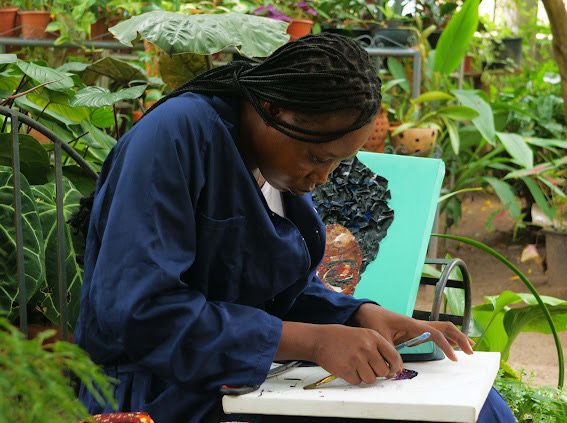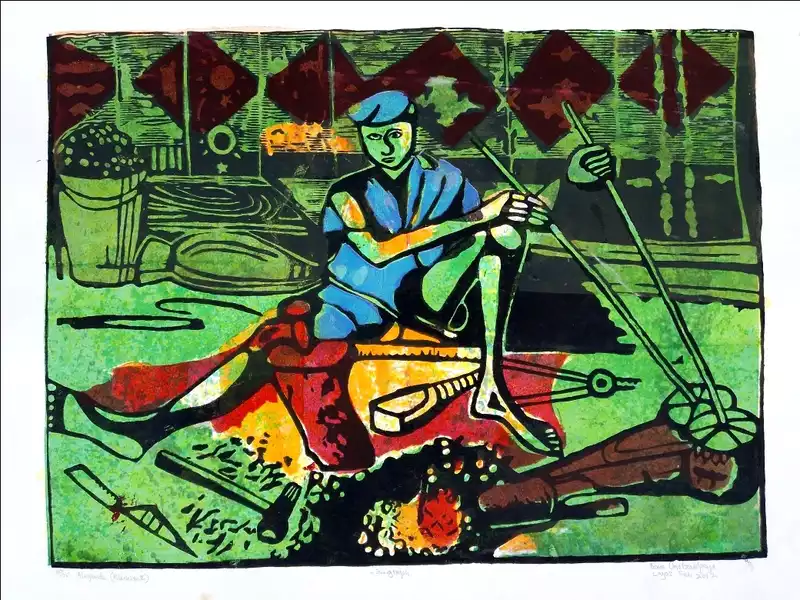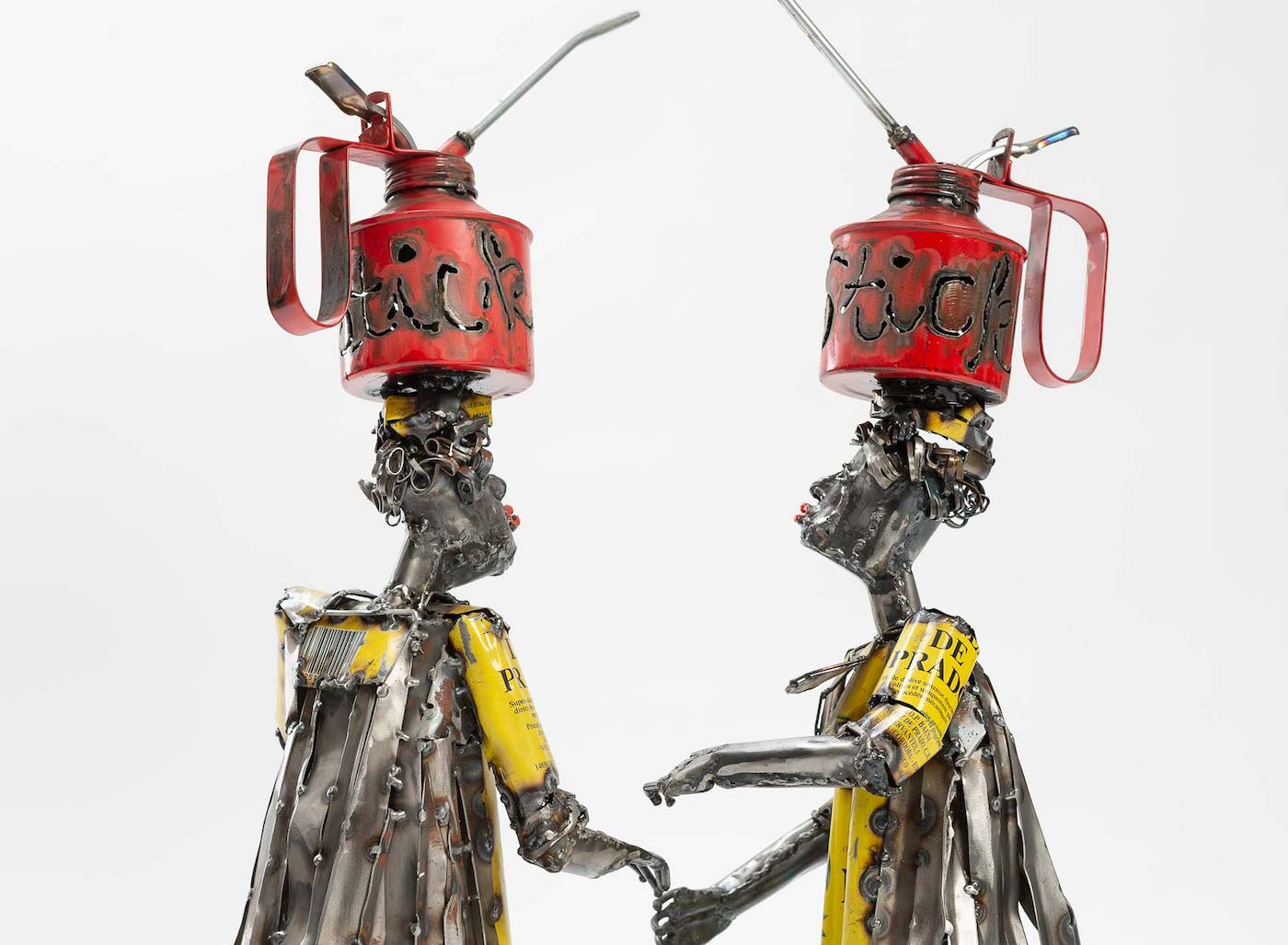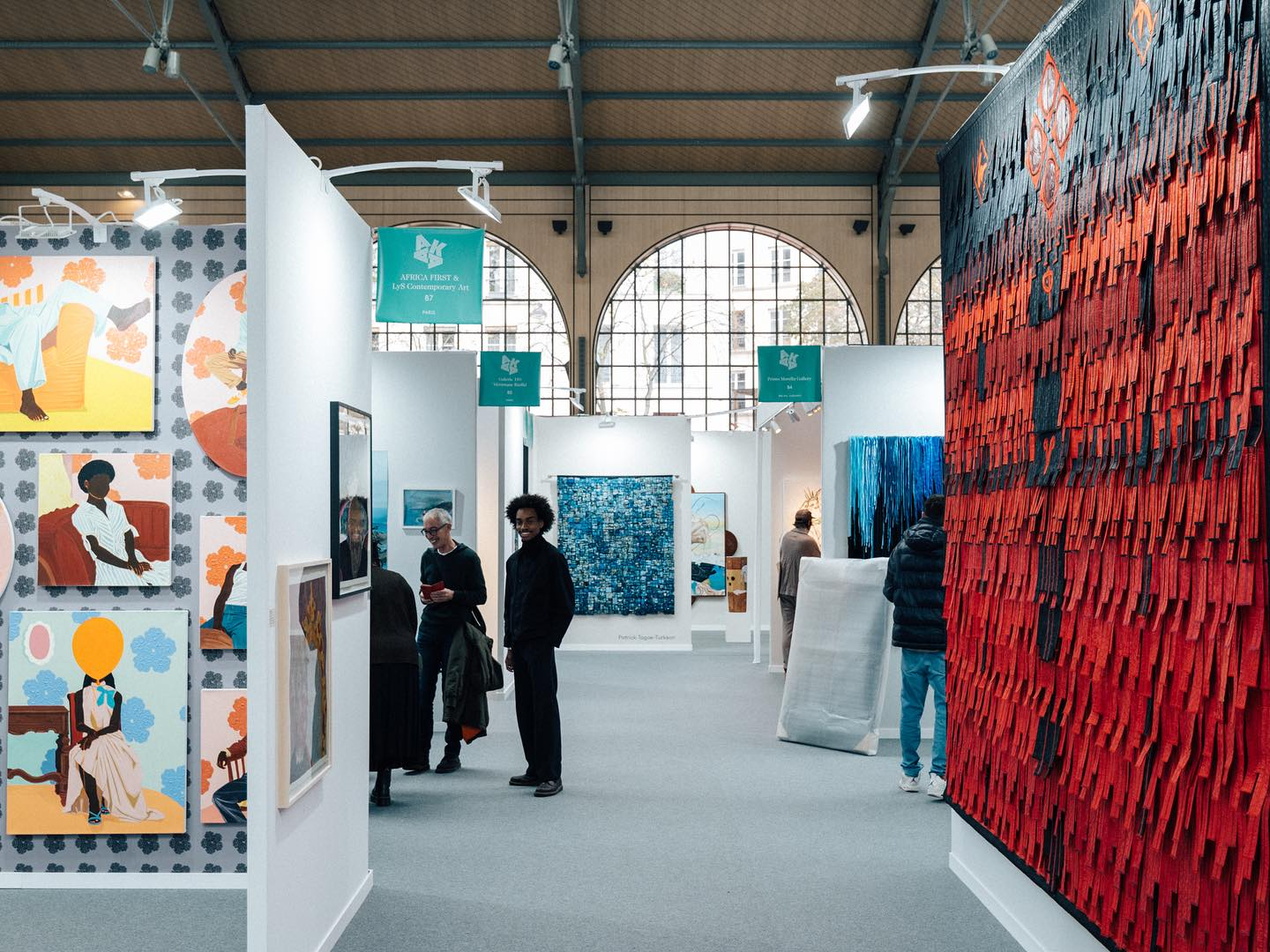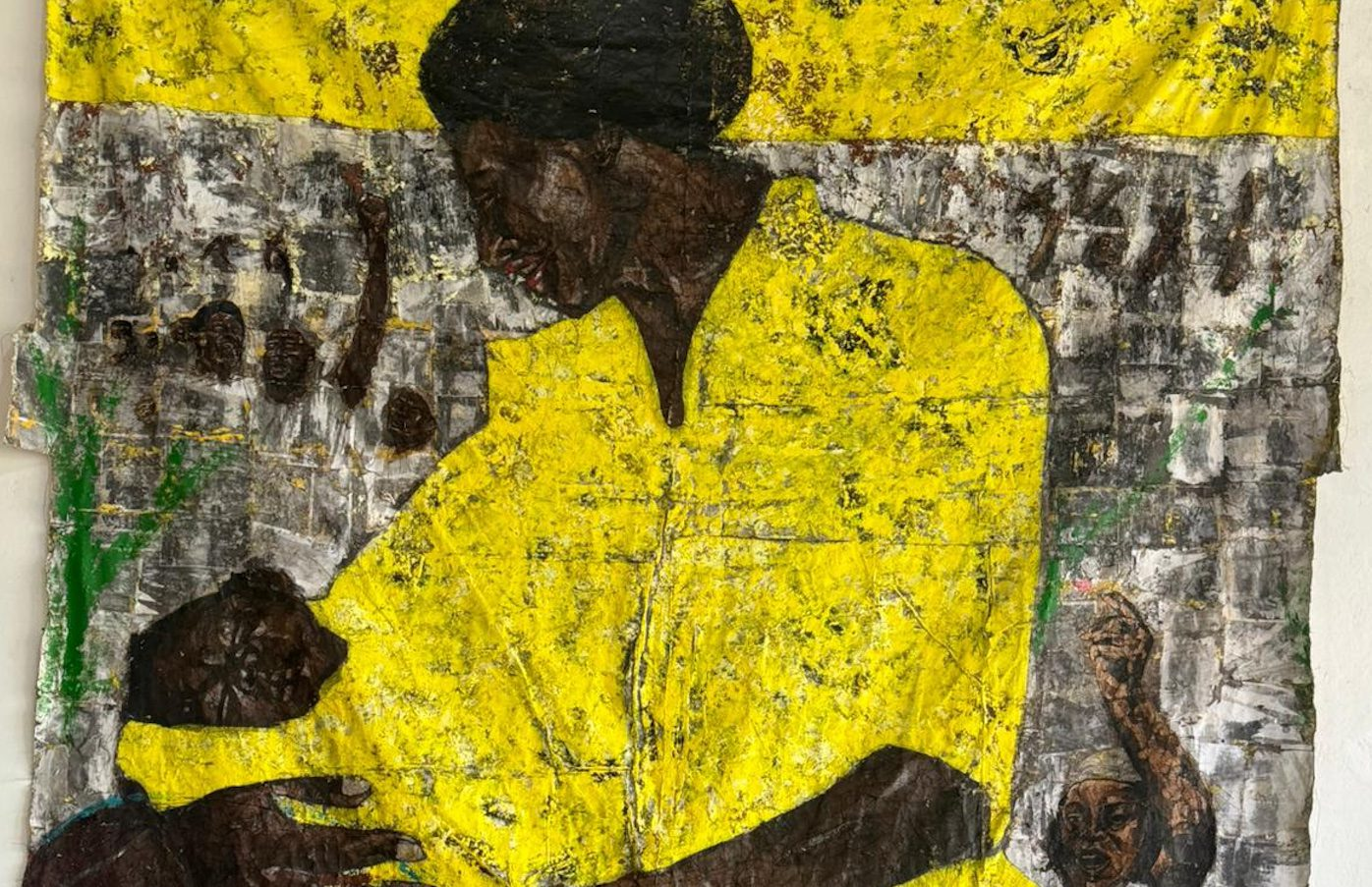Bola Obatuyi calls herself a ‘fabric artist.’ Passionate about the idea behind making new things from found materials, her artistic journey traces back to her early days in her aunt’s tailoring shop in Ibadan, Nigeria. From making doodles on the wall to crafting art with cardboard as a child, Obatuyi’s practice is a laborious one. It begins with template drawings and fabric-cutting, eventually ending with pasting, painting, and sewing.

Born and raised in Ibadan, Nigerian mixed media artist Bola Obatuyi (b. 1992) brings her canvases to life using fabric and acrylic paint. Often depicting themes of tenderness and femininity, the artist makes portraits that resonate with the viewer. Her works have been featured in group exhibitions in Nigeria and across the world, including the United Kingdom.
In our conversation with Obatuyi, she gave us insights into her distinctive artistic style and creative practice.
Tell me about how you first became interested in art.
Bola Obatuyi: My name is Bola Obatuyi. I am a self-taught visual artist from Nigeria. When I was a child, I got interested in repurposing waste materials like old bottles, used papers, and cutout fabrics, to create artwork. My aunt had a tailoring shop and at the end of a workday, there was usually a lot of waste fabrics. This inspired my artistic practice of using waste fabrics on canvas to create my work.
Many of your pieces feature vibrant colours and intricate detailing. How do you decide on the medium and visual elements for each artwork? Walk me through your creative process.
B.O: Growing up in Nigeria has contributed greatly to my art, especially with the entrepreneurial businesses such as fashion designing & tailoring as I get the waste materials I need from them. I use these materials to create my artwork because I believe “nothing is a waste with a creative mind.”
As an artist, I have always been drawn to vibrant colours because I love them and my experiences inspire the visual elements in my work. My process is a culmination of many parts. Once I decide on a new project, I try to relate it to my experiences. Then I get models, who are usually my friends and siblings. After sketching the models, preparing my fabrics, and deciding on the mood and tone of the work through my use of fabric colour, I paste my fabrics. I love the vibrant and colourful aspect of my work as it reflects the kind of person I am. I thoroughly enjoy being around happy people.
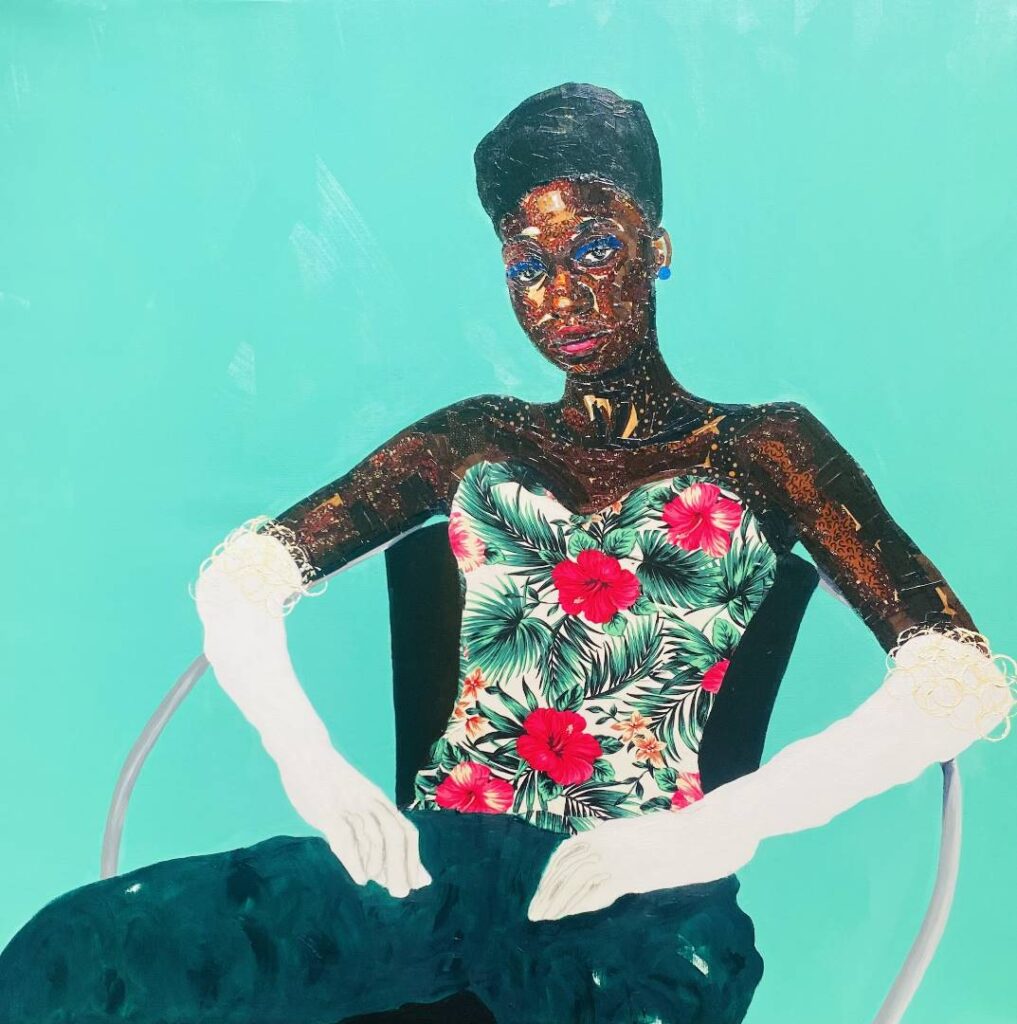
Courtesy of the artist
In your work, you explore themes of body positivity, sisterhood, and defiance. What drives your interest in these topics, and how do you incorporate them into your artistic practice?
B.O: One thing about me, I am inspired by the African woman. I am also intrigued by my culture, and the combination of these two is a major reason why I am passionate about what I do. For instance, at Nigerian parties, women wear beautiful pieces of fabrics like Ankara and Laces, to display beauty, elegance, and status. This has inspired me to create art and explore the African woman’s beauty in my work.
I am a storyteller and I love explaining things through my work.
Who are your biggest influences at this stage of your artistic career? In what ways have these artists shaped you?
B.O: There are a lot of people who have most influenced my artistic career but my major influences are; Bisa Butler, Andy Warhol, and Njideka Akunyili. Their use of colour and composition, along with how relevant their work is in the art industry inspires me. I have studied a lot of their art, and Crosby and Butler being women doing excellently and exceptionally in their practice inspire me to do more in my practice and the art industry.
Talk to me about (3) of your favourite works.
B.O: My top three favourite works, for now, are ‘Royalty’, ‘Sisters for Life’ and ‘Love on the Hair.’

Courtesy of the artist
What messages and emotions do you aim to convey in your work?
B.O: I am promoting body positivity and self-love. The message that I want to convey with my art is in three parts. The first part is addressed to African women to love themselves and accept who they are. Being a woman is not a crime. The second part is to address waste culture. What you think is useless can still be useful. The third part is to promote the vibrant colours of the African culture.

Courtesy of the artist
What are your future aspirations and goals as an artist? Are there any upcoming projects or exhibitions that you are particularly excited about?
B.O: I want to be successful as an artist. I want my works to be in different auction houses. I want my work to yield good output for my buyers and collectors. For now, I am planning my first solo show in Denmark. I am also excited to be a part of the upcoming group show with Omenai.
Iyanuoluwa Adenle is a Nigerian art writer, essayist, and poet based in Lagos. She is currently the head writer at Omenai. Adenle has contributed to a number of art publications, including Tender Photo, Art News Africa, Pavillon 54, and Omenai.

